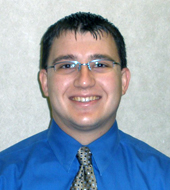Summary
Definition
History and exam
Key diagnostic factors
- involuntary twisting or deviation of the neck
- neck pain
- presence of sensory trick
- abnormal head posture
- otherwise normal neurologic exam
Other diagnostic factors
- head tremor
- insidious onset
- headache
- asymmetrical hypertrophy of neck muscles
- normal range of motion (ROM) of neck (early in course)
Risk factors
- female sex
- middle age (40 to 59 years)
- white ancestry
- family history of acquired torticollis
- exposure to dopamine-blocking drugs
- history of trauma
Diagnostic tests
1st tests to order
- clinical diagnosis
Tests to consider
- cervical x-rays
- CT or MRI of the brain
- CT or MRI of the neck
- DYT-1 gene
- serum ceruloplasmin, urinary copper excretion
- electromyography
Treatment algorithm
without pain or functional impairment
with functional impairment or pain or diminished quality of life
refractory to therapy with botulinum toxin
Contributors
Authors
David B. Sommer, MD, MPH

Neurologist and Movement Disorder Specialist
Reliant Medical Group
Worcester
MA
Disclosures
DBS declares that he has no competing interests.
Acknowledgements
Dr David B. Sommer would like to gratefully acknowledge Dr Mark A. Stacy, a previous contributor to this topic.
Disclosures
MAS has received speaking honoraria and consulting fees from Allergan, the manufacturer of Botox; he has received research grant support from Ipsen, manufacturer of Dysport, and Merz, manufacturer of Xeomin; he is an author of a reference cited in this topic. Duke University has received funding from Allergan for a continuing medical education program.
Peer reviewers
Allison Brashear, MD
Professor and Chair
Department of Neurology
Wake Forest University Baptist Medical Center
Winston Salem
NC
Disclosures
AB declares interests in Allergan; she is an author of a reference cited in this topic.
Robert Werner, MD
Professor
Chief of PM&R
Ann Arbor VA Medical Center
Ann Arbor
MI
Disclosures
RW declares that he has no competing interests.
Peer reviewer acknowledgements
BMJ Best Practice topics are updated on a rolling basis in line with developments in evidence and guidance. The peer reviewers listed here have reviewed the content at least once during the history of the topic.
Disclosures
Peer reviewer affiliations and disclosures pertain to the time of the review.
References
Key articles
Stacy M. Epidemiology, clinical presentation, and diagnosis of cervical dystonia. Neurol Clin. 2008 May;26(suppl 1):23-42. Abstract
Singer C, Velickovic M. Cervical dystonia: etiology and pathophysiology. Neurol Clin. 2008 May;26(suppl 1):9-22. Abstract
Colosimo C, Suppa A, Fabbrini G, et al. Craniocervical dystonia: clinical and pathophysiological features. Eur J Neurol. 2010 Jul;17(suppl 1):15-21. Abstract
Rodrigues FB, Duarte GS, Marques RE, et al. Botulinum toxin type A therapy for cervical dystonia. Cochrane Database Syst Rev. 2020 Nov 12;11:CD003633.Full text Abstract
Dashtipour K, Lew M. Cervical dystonia. In: Stacy MA, ed. Handbook of dystonia. New York, NY: Informa Healthcare; 2007:137-53.
Jankovic J, Leder S, Warner D, et al. Cervical dystonia: clinical findings and associated movement disorders. Neurology. 1991 Jul;41(7):1088-91. Abstract
Reference articles
A full list of sources referenced in this topic is available to users with access to all of BMJ Best Practice.

Differentials
- Arthritis of cervical spine
- Neck mass
- Cerebral mass, lesion or infarct
More DifferentialsGuidelines
- Practice guideline update summary: botulinum neurotoxin for the treatment of blepharospasm, cervical dystonia, adult spasticity, and headache
- EFNS guidelines on diagnosis and treatment of primary dystonias
More GuidelinesPatient information
Depression in adults: what is it?
Parkinson disease: what is it?
More Patient informationLog in or subscribe to access all of BMJ Best Practice
Use of this content is subject to our disclaimer